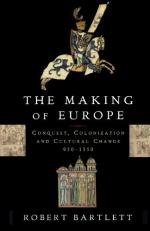|
This section contains 2,520 words (approx. 9 pages at 300 words per page) |

|
Cartesian Rationalism. The Cartesian Rationalism of the seventeenth century was fundamental to Enlightenment thought and thus to many nineteenth-century philosophies. Cartesian Rationalism was developed by Rene Descartes (1596—1650), a distinguished seventeenth-century French mathematician, who united algebraic and geometric mathematics by developing a method to transform algebraic formulas into plotted curves and to convert curves into algebraic equations. Before Descartes, algebra was the mathematics of discrete quantities, a method particularly suited to those who viewed reality as a composite of parts, while geometry was the mathematics of the spatial void, suited to the Platonists, who viewed nature as a unity rather than as a collection of countable parts. Descartes' new method abolished this distinction, thus making it possible to view the world as a cosmic machine of interacting parts that act in harmony with each other in ways that can be comprehended by the...
|
This section contains 2,520 words (approx. 9 pages at 300 words per page) |

|




